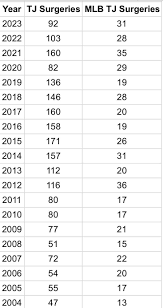Understanding Tommy John Surgery: Importance and Recovery

Introduction
Tommy John Surgery, formally known as ulnar collateral ligament (UCL) reconstruction, has become a critical procedure in the world of sports medicine, particularly in baseball. Named after the former Los Angeles Dodgers pitcher who first underwent the surgery in 1974, this operation addresses a common injury among athletes, especially those involved in throwing sports. With an increase in throwing-related injuries, awareness and understanding of this procedure have grown, reflecting its significance in preserving athletic careers.
The Need for Tommy John Surgery
The UCL is essential for maintaining the stability and function of the elbow joint, especially during the throwing motion. Injuries can occur from repetitive stress, resulting in severe pain and a loss of pitching velocity. A study published in the journal Sports Health highlighted that over 100 Tommy John surgeries are performed annually in Major League Baseball alone, indicating a trend of increasing injuries, particularly among younger athletes. Factors such as intensive training, year-round play, and inadequate recovery times have contributed to the rise in UCL injuries.
Procedure and Recovery
During Tommy John Surgery, the damaged UCL is replaced with a tendon from another part of the patient’s body or a donor tendon. The operation, which is typically performed under general anesthesia, can take about 1 to 2 hours. Post-surgery, rehabilitation is crucial for successful recovery. Athletes often require 12 to 18 months to regain full strength and functionality, and the focus is not only on physical healing but also on retraining muscles and ensuring proper mechanics to prevent future injuries.
Recent Developments
Recent advancements in surgical techniques and rehabilitation protocols have improved the outcomes of Tommy John Surgery. Researchers have also begun exploring preventative measures and the influence of training practices, as well as the role of sports specialization in increasing injury risk. Prominent sports organizations have started to implement guidelines aimed at protecting young athletes from the risks associated with overuse, emphasizing the importance of rest and cross-training.
Conclusion
Tommy John Surgery remains a pivotal component of sports medicine, allowing athletes to return to their competitive edge following a serious shoulder condition. As injuries continue to rise among younger players, education about preventive strategies and adherence to safe training routines has become increasingly vital. The significance of this surgery extends beyond just recovery; it prompts a broader conversation about athlete health and well-being in today’s sports landscape. Awareness and proactive measures are essential for reducing the prevalence of UCL injuries, ultimately ensuring that more athletes enjoy lengthy and successful careers.









